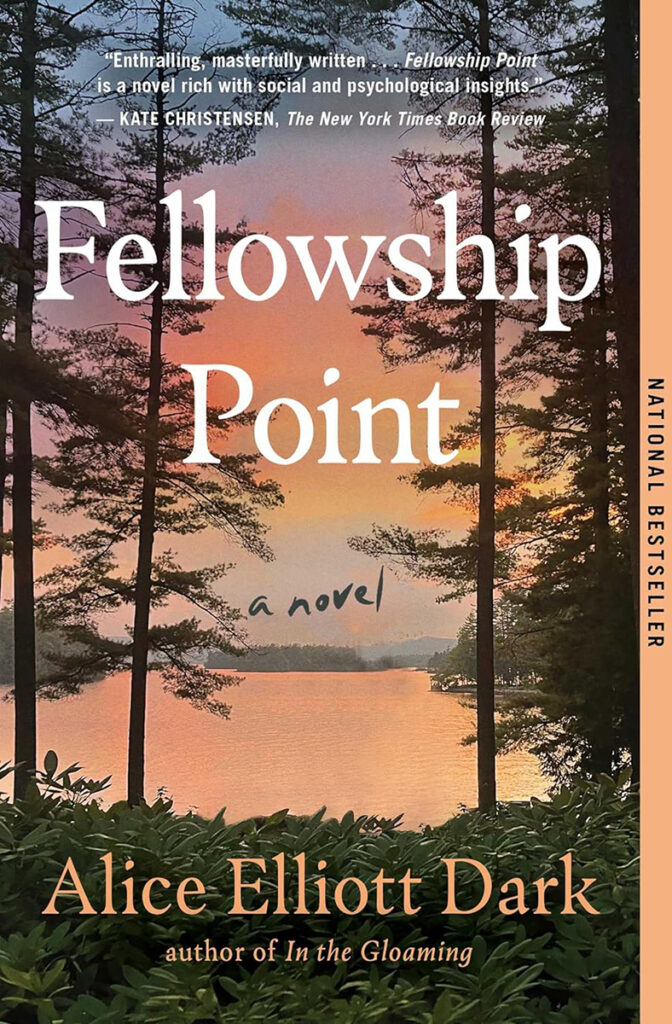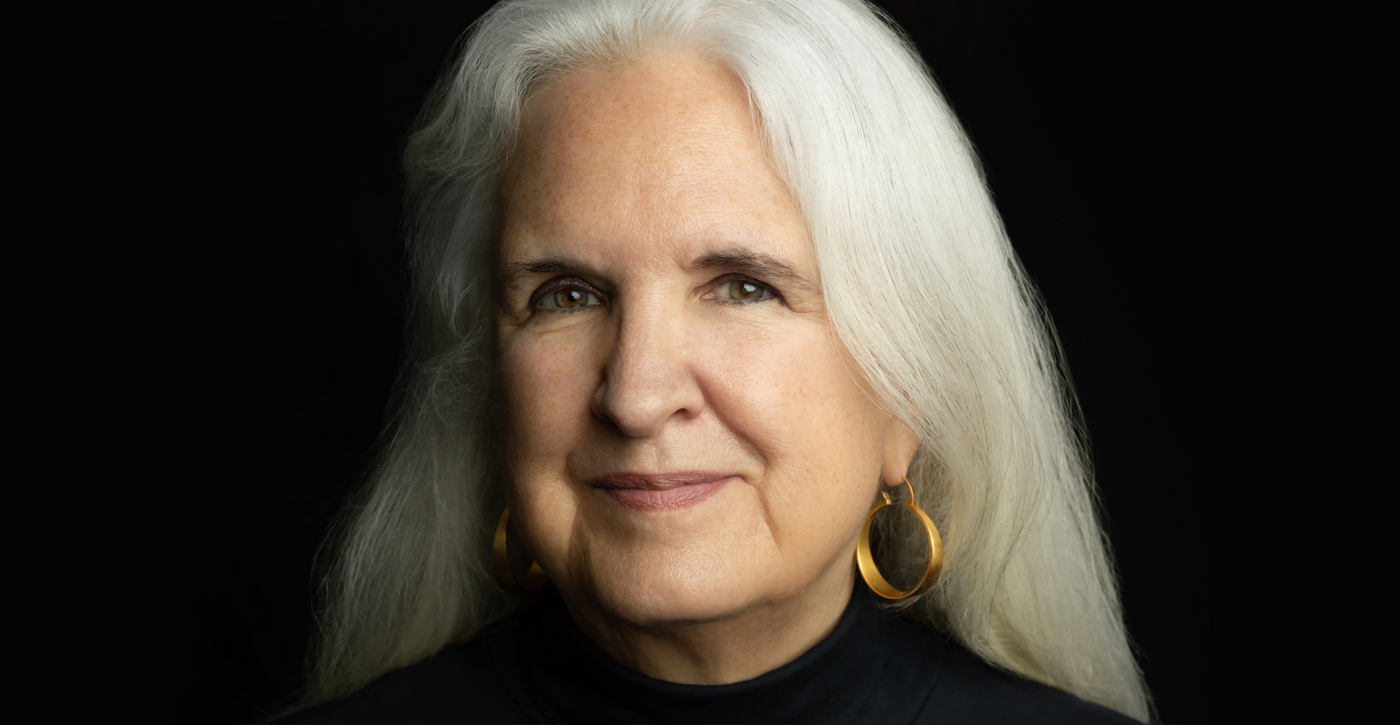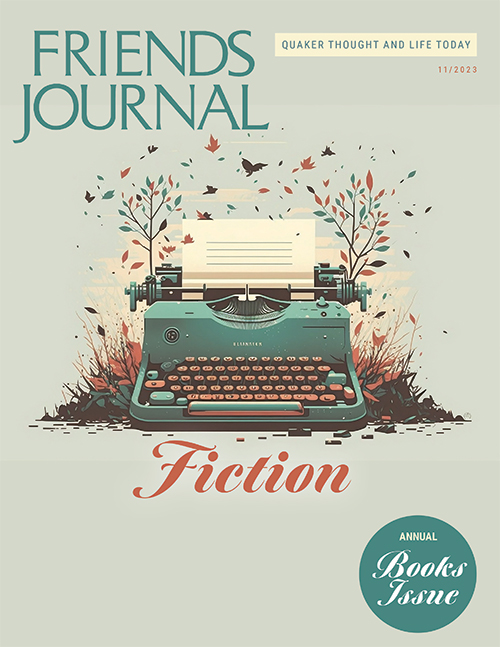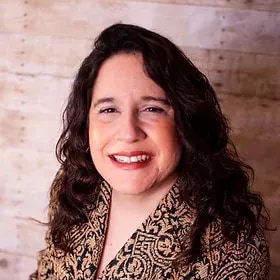A Friends Journal Interview
Alice Elliott Dark’s latest novel, Fellowship Point, tells the story about two prosperous Philadelphia Quaker women, both in their 80s, who work to preserve a beloved natural area. In seven sections with simple titles—each one a subtle nod to some aspect of Quaker practice—“we learn the story of this long-standing friendship as it faces a crisis,” writes Lynn Weiss in her Friends Journal review this past April. Weiss continues:
That’s the beauty of Alice Elliott Dark’s novel: it portrays the inner lives of contemporary Quaker women in a way that will be perfectly obvious to Friends but so deeply integrated into the characters’ secular activities and concerns that someone who is not a Friend may well miss the obvious cues.
Dark, who was born in Philadelphia and grew up in Bryn Mawr, Pa., is also the author of the novel Think of England and the short story collections Naked to the Waist and In the Gloaming; the latter includes her short story of the same name that was made into an HBO film starring Glenn Close and directed by Christopher Reeve. She lives in New Jersey and is an associate professor in the English department and the MFA program at Rutgers University–Newark. Friends Journal’s Sharlee DiMenichi spoke with Dark in August.

Sharlee DiMenichi: What inspired you to write about Quaker characters particularly?
Alice Elliott Dark: Well, when I was creating these characters, or—I should say—when they were coming to me (because that’s more the way it happens), I realized certain things about them: that they were from Philadelphia and that they were in a certain milieu.
And I was thinking about their faith life. They’re from Philadelphia, and they have a certain belief in values that I associate with Quakerism. I wanted to give them that structure. I wanted them to have a very active faith life that they could practice on a daily basis, which we see them doing. Of course, that’s not exclusive to Quakerism, but I thought it very much suited the way of both of these women—both their personalities and their background.
SD: What were some of the key questions you had to research about Quakerism while researching the novel?
AED: I was very exposed to Quakerism when I was growing up. I knew the general history, but I didn’t know the specific history. I think my ancestors came in as Quakers into the Massachusetts Bay Colony; it wasn’t allowed there. I found records of them going to jail, but it was just so perfunctory. They went for like an afternoon because they wanted to go to meeting. The [authorities] kept trying to make them sign their allegiance to the Massachusetts Bay Colony. They had left [England] to get away from having a king, and they were not going to have another king. I really liked that so much.
I was not raised as a Quaker. I was raised as an Episcopalian, but I went to a school that had been a Quaker school. It was no longer a Quaker school, but we still had a lot of Quaker practices there. We had quiet hour and quiet day. A lot of Quakers came and spoke to us about pacifism and what the Quakers were doing during the Vietnam War. That was very, very interesting and extremely influential to me. We don’t live in a pacifist society, by any stretch of the imagination. I was just very interested, so I did more research about pacifism and about what Quakers choose to do during periods of war: how they choose to behave.
It’s one of the things I’ve been most challenged about in this book, to tell you the truth, in [speaking to] book clubs and so on. People don’t understand that when there’s a war Quakers don’t take up arms. It’s like, Okay, you’re pacifists, but of course [you should] if there’s a war. . . . I say to them, “No, no; that’s not how it works.” And I was also very interested in the history of equality between men and women in Quakerism.
I ended up reading a lot about spiritual beliefs and the big schisms. The meetings I’ve been to have not had any sort of a leader, so I really haven’t experienced [these conflicts], but I read a lot about why certain groups decided they wanted to go in [a different] direction and so on. So I am filling myself in on information I didn’t have.
SD: Would you describe your process of developing the two main characters, Agnes and Polly?
AED: I really developed them in conversation with each other and with other people. You know, I didn’t sit down and make a list of she’s like this and she’s like that, or their backgrounds or anything. I just put them in situations, which is generally how I do it. I’ll put them in a situation that’s very stressful, for example, and see how they behave. I just watch how they behave.
I had each of them talking with different people: Polly with her husband and children. That developed and developed, and then I had the two of them talking with each other, which was the most compelling to me. It had a lot to do with their faith lives. Polly, I felt, was easier to match. Her personality was easier to match with her values. Agnes was more difficult. I think she was definitely a person who lived according to her Quaker values, but it was harder for her because she had a personality that was not necessarily an easy fit. She had to wrestle with herself a lot.
SD: Was there a version of the novel that included more excerpts from the Franklin Square novels that the character Agnes wrote?
AED: There’s one little excerpt in this. I did write excerpts. I had more excerpts [from the series], but I think I ended up including only one.
SD: Have you ever experienced writer’s block as Agnes does in the novel? And if so, what helps you start writing again?
AED: I have in the past. I went through a long period—and it really was pretty long—where I was quite crippled by perfectionism. I would write something, and then I would cross it out and try again, cross it out and try again, and cross that out. I got over it; I don’t have that at all anymore. I think what got me over it was more a shift in perspective, where I realized that I was the only person who could write my writing and that if I was trying to be a perfectionist, I wasn’t writing my writing.
Agnes has a very specific reason for her writer’s block, which is more explicit than mine. Mine was more personality. She really has certain things she doesn’t want to write about; she just doesn’t want to go there, and she knows she has to. But she hasn’t realized that, and when she starts having writer’s block, she doesn’t know why.
SD: How did you arrive at the decision to center the story around female friendships?
AED: I really thought I was centering it around our attitudes toward land ownership and materialism versus a more spiritual focus in life. You know, I had that section early in the book about the two brothers; one of them was more egalitarian. He thought if we maintain this system of these small factories, these men could come to own their factories, and then they can do better for their families and in the world. The other brother thought, no, consolidate: make one big factory with no chance for anyone to get into the ownership class.
When I was little, I questioned the idea of land ownership. I didn’t understand how there could be an invisible line between this yard and the next yard that I’m not supposed to cross. That just seemed so silly. And when I started learning about Native Americans in kindergarten or first grade, I learned that they didn’t have that system. They had a very different idea of how they occupied a territory as opposed to the tribe next to them. It was so different, but it was very compelling to me. The fact that way had such a strong emphasis on friendship was something that came so naturally to me. I went to a girls’ school, and I always had really close friendships with other women. That was always the center of my life. It just went that way; I wasn’t trying to make a point about it or anything.
As I went along in the book, I noticed that the brothers did not have a confrontational relationship with each other; they accepted each other. They did not always approve of each other; they knew each other’s flaws. They were aware, but they chose to deal with [their lack of agreement] by not saying anything, instead just moving on. It was the way I was raised, actually; if you get mad at a friend, wait a couple of days, and that feeling will go away. I feel now we live in a world that encourages confrontation between family members, friends, partners, and parents and children: everybody. I’m not saying I don’t think it’s good because I think there’s some things that are very good about it.
I put it in the book that when Agnes and Polly do have a huge confrontation, they don’t know how to handle it, and they say things they shouldn’t say. They go too far. They don’t know how to come back from it because they haven’t had experience with that. I was thinking about how do we maintain decades-long relationships? What are the things that we can do to make a relationship last? That was something I was writing about. When they made up, it was around a common task. It wasn’t introspective sharing or whatever; it was a common task that broke the ice. It had been a year, and they didn’t go back over that ground. I think they each individually went over that ground, and they kind of understood that when they got back together.
But yes, a lot of their relationship is a combination of internal and external feeding back and forth. They like to meet each other in the graveyard where they’re with their dead, their beloved dead, and the beloved dead are very much with them when they’re there. There’s a love of nature and a love of being in these beautiful places that feeds their souls. It’s a feedback loop, I think. It was natural for them to come back together outside when Polly was very upset about something. They went forward from there.
SD: How did your own relationship with the character Dick evolve as you were creating him?
AED: I like Dick. Many people (laughing) have told me they hate—I mean, they literally say they hate Dick. And I don’t hate Dick. I didn’t want to make fun of him; I wanted to make him someone who was very average. He was just hitting his marks through life. And he had this big idea: he wanted to write the definitive book on pacifism, and he wrote it in 1938. By the time the United States went to war, it was a book that no one was going to read, so it was a failure. He wasn’t a person who could turn that around or be resilient enough to move on to something else. He was circling around that failure, and feeling that it was unfair, he lived in history in a bad way.
I actually wrote a whole section from his point of view, and then the point of view shifted to Polly when she was talking with him in the early mornings. He was telling her all these things he had never told her: talking about his past and what teaching had meant to him. Actually I think I cut that part. But he spoke to her of an experience with his mother when he was young, and his meeting and appreciating her. That made me feel very close to and sympathetic toward him.
I think some readers have felt that he’s fairly solipsistic. He’s the “great man in a small pond” kind of thing. He’s self-absorbed, but I don’t think he’s in any way intentionally nasty; he is just kind of oblivious. Writing from his point of view and thinking about his inability to really talk about his own feelings or his interior life made me sympathetic toward him. His wanting worldly recognition that he never got was sympathetic.
SD: I’m curious about the recurring theme of writing being read by readers for whom it wasn’t written. How do you decide the pace at which to let readers and characters in on secrets?
AED: That’s an interesting question. I mean, that’s something I’ve worked on. When and how do I decide? Trial and error, you know. I’m a writing teacher, and, in general, I’ll say something like, if you want to have a flashback, put it in when it becomes important to the character in the present. That way it’s not artificially imposed on the story. But, for example, the notebooks that Agnes wrote in from 1960 to 1963 come into the story when she’s starting to deal with the idea of possibly sharing more about her past with a young editor named Maude.
Maude’s pushing her, and she goes up to the attic to get those notebooks and read them herself. It takes her a little bit longer to show them to Maude, but it’s really like that. It’s coming out of the character when they’re ready; it’s just the way we understand anything. We can know it, but we don’t understand it until we’re ready. We can know things for years before we understand them. So I’m trying to figure out: when is someone ready to really hear something, and that’s when I put it in. It’s the same thing with the big reveal at the end. I put it in when I felt like Agnes was just on the cusp of really changing. And she does have a big change at the end of the book. That’s the catalyst for change. She gets something back that she thought she was never going to get back, and it opens her up quite a bit. Then she’s able to think about what should happen with the land and all of that.
SD: What would you like to add?
AED: I don’t know; I don’t know what I’d like to add. I appreciate the opportunity to talk to you about it; I was glad that you were interested in talking about it. I was concerned that I wrote something wrong about their practice or Quaker practice, which I obviously didn’t want to do.
SD: It felt very true to life to me, definitely.
AED: People have reflected that to me. I’ve definitely had a lot of people who are very actively involved in Quaker practice say it felt great to see it on paper like this.
I’ve gotten so many letters—I can’t tell you—from women who are around 80 saying they were so happy to see women on the page that were active, growing, thinking, changing, and living their lives fully. I really felt that even though I was not brought up as a Quaker, it was just the atmosphere I swam in. My stepfather was a Quaker, and I went to meeting with him all the time. I was just around it. In Philadelphia, it just permeates the whole city, whether people realize it or not. So I was glad that something gave me the opportunity to do a lot of research about it and to really understand rather than having Quakerism be just the atmosphere I grew up in, if you know what I mean.
It really is so fascinating. I was fascinated by how successful the Quakers were, even though they had these egalitarian beliefs and even though they very early stopped the practice of owning slaves. Some did, but slaveholding ended early, way earlier than it ended for the country. Also the pacifism is amazing: that a faith practice that has that tenet, and also the tenet of every person having the same access to the Spirit and being able to access Spirit internally and not through an external source. Those are things that are very different [from tenets in other religions], and yet Quakerism has survived and thrived. That was really something that fascinated me. I felt that way very much about the characters too. I felt that they were emblematic of that idea: you can be different and yet thrive if you’re true to yourself.





Comments on Friendsjournal.org may be used in the Forum of the print magazine and may be edited for length and clarity.